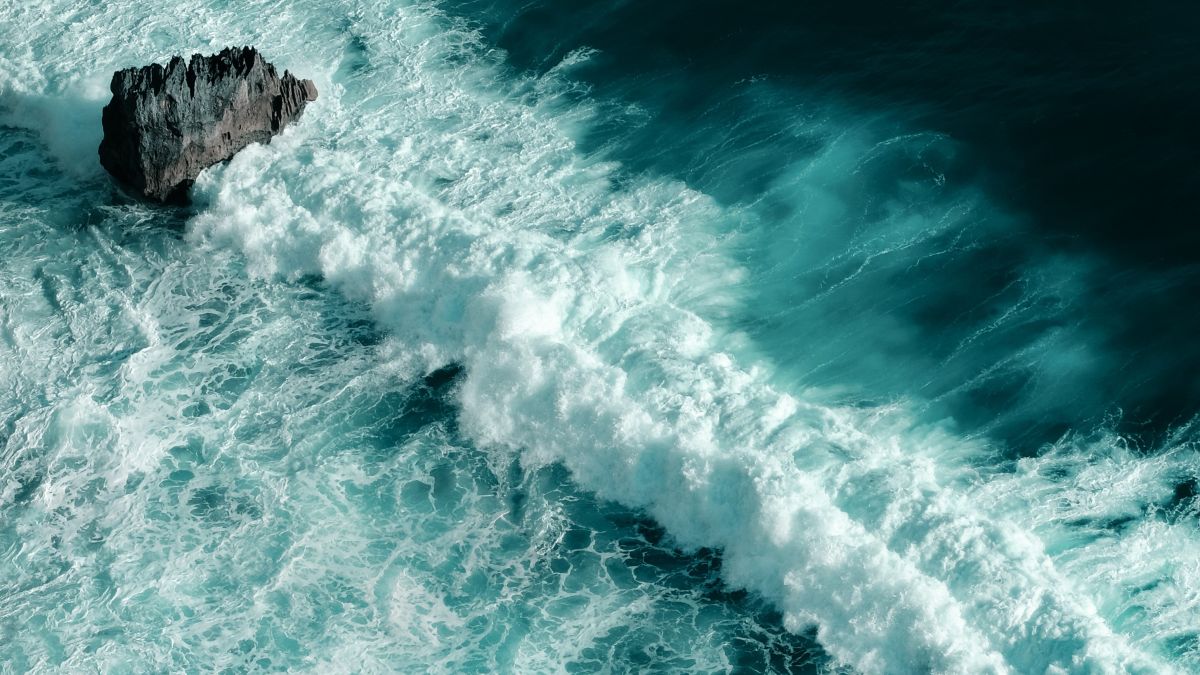The salty current flooded into the South Atlantic via the Agulhas Leakage, which snakes around the tip of Africa. (Image credit: Shutterstock)
Extremely salty water flooding into the Atlantic Ocean from the Indian Ocean may have contributed to the end of the last ice age 15,000 years ago, researchers have found.
Propelled by a change in winds and currents towards the end of the Pleistocene epoch (2.6 million to 11,700 years ago), the salty stream snaked around the tip of Africa in an inflow of water known as the Agulhas Leakage, which merges with the Gulf Stream in the North Atlantic. Once there, the huge salt delivery likely triggered changes in ocean circulation systems that help to regulate the climate, according to the researchers.
Scientists already knew that the end of the last ice age saw significant changes in ocean currents and salinity, but until now they were unsure how this occurred. “We discovered more than ten years ago that the end of the ice age saw a massive pulse in Atlantic currents, which helped usher in warmer interglacial conditions,” Steve Barker, a professor of earth science at Cardiff University in Wales who participated in the research, said in a statement.
“Our new study shows that the salt that helped make these currents so dense and powerful was sourced from more than 10,000 kilometers [6,200 miles] away in the Indian Ocean.” Specifically, the researchers have traced its origins to the Indonesian archipelago.
In the new study, published Wednesday (May 10) in the journal Nature, researchers describe how drops in sea levels during glacial periods over the last 1.2 million years drove a huge increase in salt concentrations in the Indian Ocean. The cold temperatures locked so much water from the oceans in giant ice sheets that sea levels fell by an average of 157 feet (48 meters) compared with sea levels today. This exposed parts of the seafloor in the Indonesian archipelago and cut off currents flowing into the Indian Ocean from the Pacific.
Related: Where did ocean currents come from?
“Under the hot sunshine of the subtropics, seawater evaporates and gets saltier,” lead author Sophie Nuber, a climate and marine geochemist at National Taiwan University’s Department of Geosciences, said in the statement. “Typically in the Indian Ocean this salt is diluted by fresher waters flowing in from the Pacific, but during the ice ages this current was cut off by a drop in sea level, so the salt could build up undiluted.”
The researchers analyzed chemical fingerprints found in microscopic fossil shells known as foraminifera to track changes in sea surface temperatures and salinity over the last 1.2 million years. They drilled up the shells in cores of deep-sea mud at a site in the western Indian Ocean, at the northern entrance to the channel between Mozambique and Madagascar — through which water would have flowed into the Agulhas Leakage.
The shells revealed that salt concentrations in the Indian Ocean increased during each glacial period.
Shifts in winds and currents then released a powerful stream of the super salty water into the South Atlantic via the Agulhas Leakage. Using climate models, the researchers found that this influx could have influenced the Atlantic Meridional Overturning Circulation — the system of ocean currents that circulate in the Atlantic, bringing warm water north and cooler water south. This circulation brings warmth to various parts of the globe, according to the National Oceanic and Atmospheric Administration’s National Ocean Service, and may have heated the climate enough to bring the last glacial period to an end.
The finding reveals how changes in currents and salinity can have a significant impact as the world faces climate change. “Our work shows how different parts of the climate system are surprisingly interconnected,” co-author James Rae, an earth scientist at the University of Saint Andrews in Scotland, said in the statement. “Changes in circulation and salinity in one part of the ocean can have huge impacts on the other side of the planet, so we need to stop global warming to prevent further disruption to these critical circulation systems.”
































